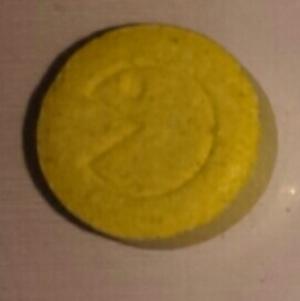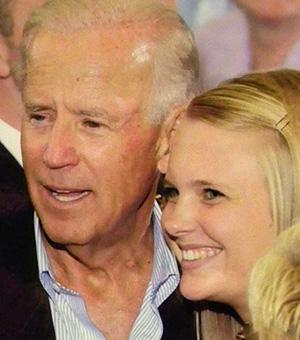[This article was written in partnership with Alternet, and was originally published here.]
With the holiday break coming up soon, millions of young Americans will be looking to party. And tens, perhaps hundreds of thousands of them will be looking to stimulant drugs, especially Ecstasy (MDMA), to help them dance to the throbbing beats far into the night. MDMA is a synthetic stimulant with a chemical structure related to both methamphetamine and mescaline. It's great at providing the energy for partying the night away with a psychedelic tinge. The new scene drug, Molly, is simply Ecstasy in powdered form.

Some of those fun-seekers are going to take too much. And some of them are going to end up ingesting something they thought was Ecstasy, but wasn't. And one or two or three of them might die. Despite breathless media reports, people dying from Ecstasy or from what they thought was Ecstasy or what they thought was a drug like Ecstasy, is not that big a problem, especially compared with the 16,000 or so people who died last year from opiate overdoses. The number of Ecstasy-related deaths each year ranges from the single digits to the low dozens.
Still it is a problem. Any avoidable death is a problem, and those deaths are largely avoidable. They occur because of varying combinations of ignorance, greed and bad public policy. Some people are working to prevent those deaths, and the work extends from the club or rave or festival door to the halls of power in Washington.
The harm reduction group Dance Safe is among those doing that work. The small non-profit offers educational services, encourages people to submit their pills for testing ("drug checking"), and has informational booths at venues that will let them.
Where 20 years ago, the Ecstasy and party drug scene was largely limited to word-of-mouth raves, things have changed, said Dance Safe executive director Missi Wooldridge.
"We've seen a real explosion in the scene that has been transformed from an underground rave culture to a real mainstream electronic dance music culture," she said. "People are likely to experiment with drugs at raves and dances, as well as with friends at parties or night clubs."
They are also likely to be ingesting either adulterated Ecstasy or other new synthetic drugs misleadingly marketed as Ecstasy. That is reflected in reports on drug checking websites such as Pill Reports and Ecstasy Data, as well as drug discussion forums like Bluelight.
Pill Reports warns that Yellow Pacman tablets found earlier this month in Kansas and Texas contain not MDMA but the synthetic methylone, a methcathinone stimulant that is a chemical analog to MDMA, but is not MDMA. And at least two different pills currently being peddled in Canada as Ecstasy are actually methamphetamine.
"A lot of what we're seeing is the new psychoactive substances infiltrating the market and the scene," said Wooldridge. "People can purchase these substances online. I see a lot of positive results for methcathinone, MDPV, methylone, and the like. Similarly, people think they're taking LSD, but it's actual N-Bomb, or maybe ketamine. People operate under misconceptions about what they're taking, and that can be serious because there are lots of differences in things like onset, duration and potency."
Educated, sophisticated drug consumers may take advantage of drug checking services, as well as have advanced understandings of drug potency, duration and the like, but they are a minority. Most people just want to party, and they want to do it with Ecstasy.
"In contrast with some places in Europe, the market for people seeking out new synthetics is very small in the US," said Stefanie Jones, nightlife community engagement manager at the Drug Policy Alliance "But that doesn't mean they're not here. Many of the people buying them are after MDMA, but here in the US, the market is young people, and many are not that well-informed or familiar with notions like drug checking to see what's in that powder. It's largely an uninformed market, so there's a lot of adulteration."
Dance Safe's Wooldridge concurred.

When people die, as two people did at New York's massive Electric Zoo festival last year, the pressure is on promoters and club owners to crack down on drugs, to increase security, even to decrease or do away with harm reduction measures out of fear of appearing to encourage drug use. In large part, that's because of the RAVE Act, a 2003 law sponsored by then Sen. Joe Biden (D-DE) that threatens owners and promoters with possible criminal sanctions for encouraging drug use.
"The RAVE Act is the elephant in the room," said Wooldridge. "Its intent wasn't to harm or prosecute legitimate event producers, but to expand the crack house laws and go after people solely having events for drug use or sales. But there has been an unintended consequence. People in the industry fear that if they attempt to address drug use they'll be help legally liable for overdoses or other emergencies. Their legal teams and insurance companies say to stay clear, turn a blind eye, but that increases the risks. We need to educate the lawyers and insurers on this. Show me a case where an event producer has been prosecuted for doing harm reduction."
"If the law is making owners scared, we should change the law so they are explicitly protected," said Jones. "Put the focus on the health and safety of the patrons. Including harm reduction shouldn't be seen as encouraging drug activity, but as prioritizing health and safety. Changing the law at the federal level would send a message to the industry that harm reduction is valuable and you won't get in trouble, and that could change the landscape of festivals."
One woman is working to do just that. Dede Goldsmith didn't mean to become a reformer, but when her daughter, Shelley, a University of Virginia student, died after taking Ecstasy at Washington, DC electronic music show the same weekend at the Electonic Zoo last year, that's what happened.
She told Vox in an October interview that when one of Shelley's friends told her Shelley had taken Molly, her first response was, "Who is Molly?" In her search for answers, she came to the realization that Molly didn't kill her daughter; federal drug prohibition and policies that discourage education about safe drug use did.
On the anniversary of her daughter's death in August, Goldsmith launched the Amend the RAVE Act campaign. Its goal, Goldsmith says, is "to make EDM festivals and concerts safer for our young people. Specifically, I am asking for language to be added to the law to make it clear that event organizers and venue owners can implement safety measures to reduce the risk of medical emergencies, including those associated with drug use, without fear of prosecution by federal authorities. As the law currently stands, many owners believe that they will be accused of 'maintaining a drug involved premises' under the act if they institute such measures, opening themselves to criminal or civil prosecution."

"The campaign is just getting underway," said Jones. "They're collecting signatures, and Dede is just having first meetings with legislators to try to get them on board, to try to get some bipartisan support."
In the meantime, other steps can be taken.
"One of the biggest things we can do is to educate with a true public health approach," Wooldridge said. "We need to have honest conversations and we need to implement drug testing; we have to have that opportunity to create an early warning system when these substances begin to appear."
"Education is really, really critical," said Jones. "We need to be able to get real drug education out to young people and meet them where they are. We need to be explicit about what the drugs are, what they look like, what the common dose it. Integrating harm reduction practices into the culture is also really important, and Dance Safe is great at that."
An effective means of tracking new and available drugs, such as a publicly funded, more comprehensive version of the drug checking websites would also be useful. But that requires someone willing to spend the money.
"We don't really have a surveillance system set up to track these new psychoactive substances," Wooldridge complained. "We don't have the public health monitoring. As a nonprofit, we do some of that on a small scale, but we don't have the capacity or the resources to really do the job. What are the priorities and where is the funding to collect the data?"
"Changing policy to allow for drug checking is also an important avenue to pursue," said Jones. "If we're going to be in a world where drugs remain illegal, we will continue to have problems with imitations and new synthetics, with people not knowing what they're getting. That would be the least we can do."
There is one other obvious response.
"It's unrealistic to think we can keep drugs out of clubs and bars and festivals. Trying to do that causes more harm than good," Wooldridge said. "We need to be realistic and recognize drug use first and foremost as a health concern, not a criminal justice issue. These drugs are often being sold as something they're not, and that's because of prohibition and the black market," said Wooldridge. "One obvious option is legalization and regulation. Then you'd have quality control and you wouldn't need all this drug-checking."
But we're not there yet. Until we are, people are going to have to watch out for themselves and for each other. Check those drugs, kids!
This work by StoptheDrugWar.org is licensed under Creative Commons Attribution-ShareAlike 4.0 International
Comments
Ms. Wooldridge is right on
Ms. Wooldridge is right on the money. When all is said and done, there really can be no other way, but legalization. It's undisputable.
Add new comment